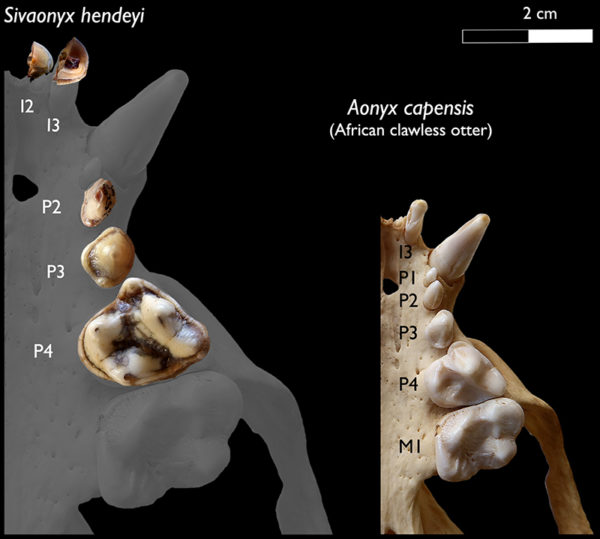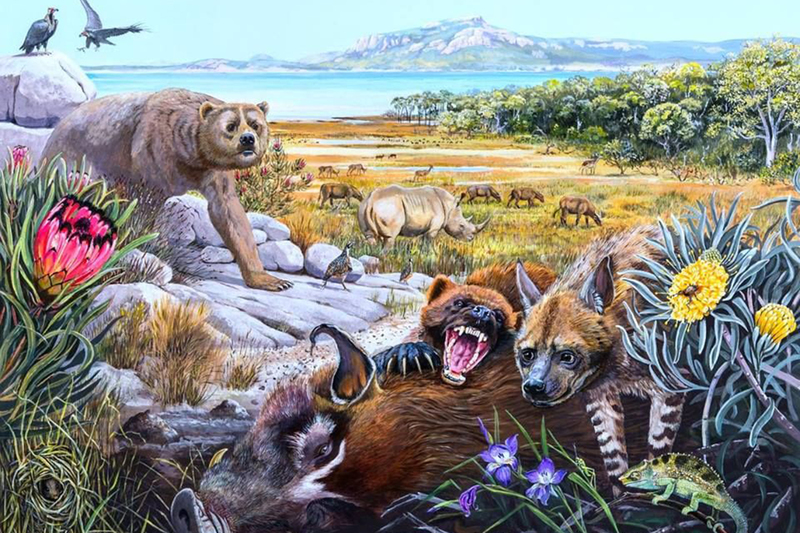Scientists from the University of Cape Town (UCT) and Iziko Museums of South Africa have uncovered fossils of a “wolf-sized otter” and “leopard-sized wolverine” that roamed the West Coast around 5-million years ago.
Dr Alberto Valenciano, a postdoctoral research fellow at Iziko and UCT, and Dr Romala Govender from Iziko, identified teeth, forelimb and hindlimb skeletons of these carnivorous creatures who are part of the mustelid family.

“Our work has led to important new data about the locomotion and diet of the rather poorly known giant otter that is unique to Langebaanweg,” says Valenciano in a statement.
“In addition, we confirm that Langebaanweg’s wolverine is a different species to that of the large-bodied Plesiogulo botori from Kenya and Ethiopia.”
These fossils are among thousands of unpublished fossils from the Cenozoic Palaeontology collections at Iziko. They were excavated between the 1960s and 1980s around Langebaan.
The researchers propose that the otter’s role in this ancient ecosystem was like that of the African clawless otter and the Asian small-clawed otter today. However, the species was much bigger, weighing in at around 40kgs. Its teeth suggest it ate armoured catfishes, molluscs, crustaceans and even bones.
“This group of giant otters are all extinct, and their new fossils enable us to unravel their biology and evolutionary relationships,” says Valenciano.
This discovery is interesting because is it was one made from fossils already excavated and sitting in a museum.
“This work highlights that although it is important to unearth new fossils, it is essential that existing collections in museums be actively researched,” says UCT palaeobiologist Professor Anusuya Chinsamy-Turan, who wasn’t involved in the study.
Picture: Maggie Newman, Geological Society of South Africa

